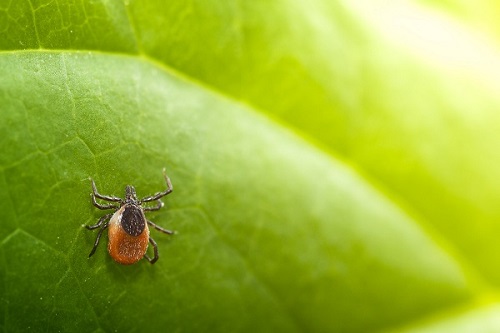
What is it?
Lyme disease is an unusual illness in that it’s caused by the bacteria spread to humans through tick bites. If caught early, Lyme disease is treated easily by antibiotics, but if left untreated, you could develop mid- or late-stage Lyme disease after several weeks and months. Symptoms can include joint pain and swelling, neurological symptoms (in 10 per cent of untreated cases), headache, fatigue and depression. Sometimes these symptoms can be mistaken for fatigue, fibromyalgia, arthritis and multiple sclerosis.
The key is to recognise symptoms and to seek medical advice as soon as possible.
How do I know I have Lyme disease?
Because the symptoms can often be mistaken for another medical condition like flu and arthritis, it is sometimes difficult to diagnose Lyme disease. However there are some definite signs to look out for:
- Lyme rash – 50 to 80 per cent of people will show a bulls-eye rash or erythema migrans.
- When the area goes red within a day of getting a bite – then it is most likely minor irritation from the bite.
- When a rash takes three or more days (can sometimes take a week) to develop and begins to spread outward, then this is a positive sign of Lyme disease.
The HSE say that there are 50 to 100 cases of so-called early Lyme disease in Ireland annually.
Can I treat it?
Tick bites are treated with antibiotics, as they present a bacterial infection. See your doctor if you think you or your child got a tick bite while out and about.
Who is at risk?
The ticks that are infectious are most prevalent in rural areas, so campers, hikers, ramblers, field and woodland workers are at the most risk.
How do I prevent Lyme disease?
- Be aware of areas that ticks are found in.
- Wear appropriate clothing – long sleeve shirts and trousers tucked into socks.
- Use insect repellents.
- Inspect your skin for ticks at the end of the day – including head, neck, skin folds (armpits, waistband, knees and elbows)
- Make sure your children’s heads and necks are properly checked.
- Before entering the house inspect your clothes, and your pet’s fur for stowaway ticks.
How do I remove a tick?
- Use a fine tipped tweezers to grip the tick as close to the skin as possible.
- Pull upwards with steady even pressure. Do not twist or jerk, as this can cause the mouth parts to remain in the skin.
- After removing the tick thoroughly clean the area with alcohol, iodine, or soap and water.
For more information on Lyme disease and tick bites see the HSE website
maternity & infant
Originally posted 2018-05-16 12:10:41.